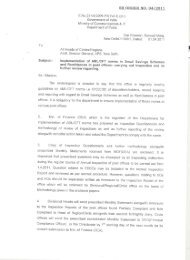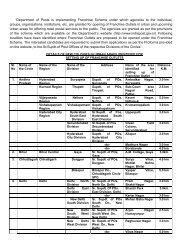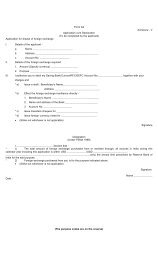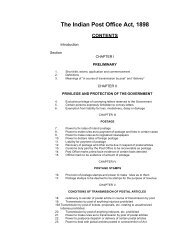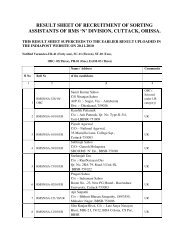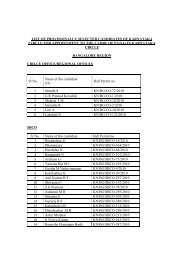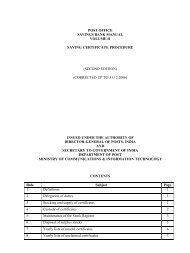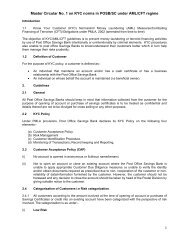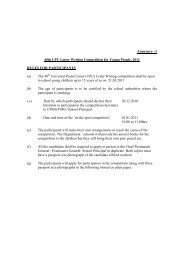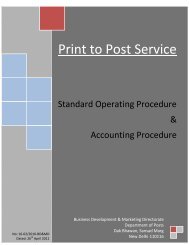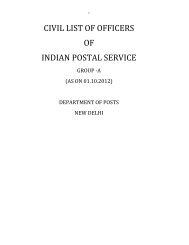Post office guide part i - India Post
Post office guide part i - India Post
Post office guide part i - India Post
Create successful ePaper yourself
Turn your PDF publications into a flip-book with our unique Google optimized e-Paper software.
SECTION V – MONEY ORDERS<br />
215. Definitions. – A “Money Order” is an order issued by the <strong>Post</strong> Office for the payment<br />
of a sum of money through the agency of the <strong>Post</strong> Office. A “Remitter” is the person who sends<br />
money by means of a money order. A “Payee” is the person named in money order as the person to<br />
whom the money is to be paid.<br />
Money order forms may be obtained from the post <strong>office</strong> on payment of ten paise each.<br />
The cost of the money order form is not adjusted from the commission payable by the remitter.<br />
216. Money Order Offices. – All post <strong>office</strong>s are money order <strong>office</strong>s except those that<br />
are distinguished by the letter D against their names in the list of <strong>Post</strong> Offices published in Part III<br />
of this Guide.<br />
217. Limit of Value. – The amount for which a single money order may be issued must not<br />
exceed Rs. 1,000.<br />
218. Money Order. – How obtained. – (1) The remitter of a money order must fill in ink,<br />
on the prescribed money order form, the necessary entries adding his signature or thumb mark at<br />
the foot. A form without signature or thumb mark or incomplete in any respect will not be<br />
accepted. All entries made in the form must be legible and may be written in English, Hindi or in<br />
the language of the district either by the remitter himself or by any one on his behalf. The remitter<br />
may write on the coupon any communication he desires to make to the payee.<br />
(2) The money order form duly filed in, together with the amount of the money order and<br />
commission either in cash or by cheque [See Clause 94(a) or (b)] must be presented at the post<br />
<strong>office</strong> window during the prescribed hours.<br />
NOTE 1: The purpose of any remittance made by a Government Officer in his official capacity, may be briefly<br />
stated by him on the acknowledgement portion of the money order form in continuation of the<br />
printed entry there “Received the sum of Rs. …………………………. as specified on the reverse.”<br />
NOTE 2: The provisions of the Note 1 will also apply to money orders issued by District Boards,<br />
Municipalities, Corporations and other local bodies on their official business.<br />
219. Payee’s name and address. – The name and address of the payee must be entered<br />
with such completeness as shall secure identification and prevent risk of wrong payment. If a<br />
money order is payable from a post <strong>office</strong> in rural area, the name of father of the payee or the<br />
husband’s name in the case of women payee may also be indicated in the Money Order form to<br />
enable the correct <strong>part</strong>y to be traced without difficulty. In the case of money orders payable in<br />
presidency and other large towns, the name of street, the number of the house in which the payee<br />
resides and the postal address should invariably be given. The occupation, rank, trade, or<br />
profession of the payee, any other <strong>part</strong>iculars calculated to help in identifying him, should be<br />
added. The name of only one person may be entered as payee, except in the case of firms or<br />
corporations, whose usual designation must be given. A money order payable to a Government<br />
official, bank manager, or on editor of newspapers, etc., in his public capacity, should contain the<br />
designation and not the name of the person for whom the order is intended.





